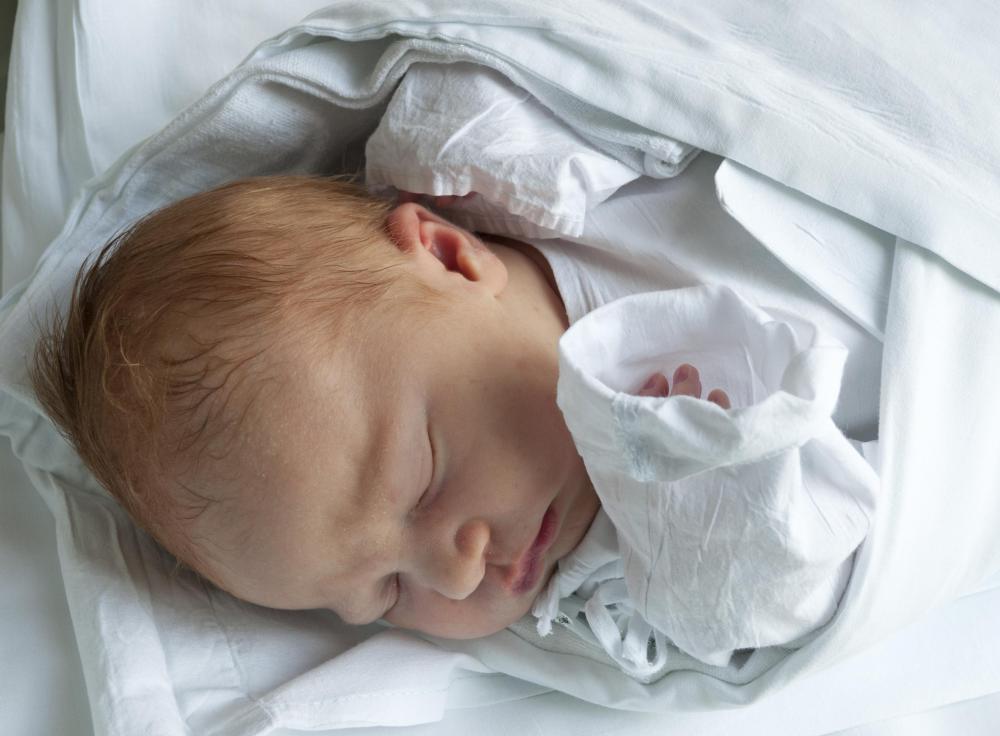At WiseGEEK, we're committed to delivering accurate, trustworthy information. Our expert-authored content is rigorously fact-checked and sourced from credible authorities. Discover how we uphold the highest standards in providing you with reliable knowledge.
What is Congenital Hearing Loss?
Hearing loss that is present at birth is known as congenital hearing loss. Also known as congenital sensorineural hearing loss, there are a variety of factors which can contribute to the development of this condition. There is no cure for congenital hearing loss and treatment is dependent on its cause and severity. Early diagnosis is best in order to establish early education and therapy.
A number of factors during pregnancy can contribute to congenital hearing loss. Exposure to the German measles, known as rubella, can lead to nerve damage in the fetus’ inner ear canal, resulting in hearing loss. A fetus’ exposure to toxic chemicals, such as those from drug and alcohol use, increase the risk of congenital deafness. Excessively high doses of vitamin A during pregnancy have also been linked to the development of birth defects, including hearing loss.

Hereditary conditions, such as albinism and Hurler's syndrome, can contribute to a loss of hearing. Couples with a family history of deafness are at an increased risk of conceiving a child with hearing loss. The most common factors which contribute to the development of hearing loss occur during the birthing process. Infections, such as bacterial meningitis, or cranial injury sustained during labor and delivery can result in damage to the inner ear. Infants who are oxygen deprived during delivery are at an increased risk of being deaf.

A diagnosis of congenital hearing loss is often made when a baby fails to meet specific developmental milestones. The lack of a response to normal sounds, such as voices or clapping, or an inability to speak can be indicative of hearing loss. When a baby does not respond as she or he should, further testing is needed to confirm there is a loss of hearing. A physician generally examines the child to determine if there are any structural issues within the ear or genetic alterations which may be contributing to the child's condition. Further testing is utilized to determine the extent of deafness.

An auditory brain stem response (ABSR) exam involves the use of electrode patches to evaluate the efficiency of the auditory nerve's response to sound. An otoacoustic emissions (OAE) test utilizes microphones to test a baby's cochlea, which normally receives and emits low-pitch sound. The microphones detect nearby sounds that should echo within the baby's ear canal. The lack of an echo is indicative of hearing loss.

Treatment for congenital hearing loss is dependent on the child's health and the reason for the hearing loss. Common treatment regimens consist of speech therapy, the introduction of hearing devices, and learning sign language. The use of special education and speech therapy is essential to the child's early speech development. The degree of a child's hearing loss determines the type of hearing device employed. In some cases an electronic device, called a cochlear implant, can be used to give the child a sense of the sounds in his or her environment and aid with speech development.
Complications associated with congenital hearing loss include delayed communicative development and its accompanying emotional impact. Children who experience a delay in their ability to communicate may experience delayed social development, such as the ability to make friends, and scholastic difficulty, such as falling behind in school. If a child's hearing loss is the result of an underlying condition, complications associated with that specific condition may manifest alongside those associated with the hearing loss.
Preventive measures can be taken to reduce the risk of congenital hearing loss. Women who are anticipating becoming pregnant should make sure they are up to date on their vaccinations. Pregnant women should consult with their physician prior to taking any medications or supplements. Activities which could expose the fetus to toxins or dangerous infections should be avoided. The prognosis of a child born with congenital hearing loss is dependent on the cause and severity of the hearing loss.
AS FEATURED ON:
AS FEATURED ON:














Discussion Comments
I'm from India and my baby is eight months old and she cannot hear the sounds. If i want to get more details about my child then where should i look for more guidance?
Post your comments